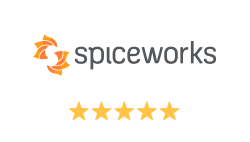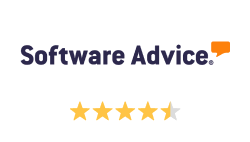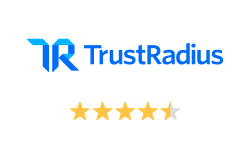Is your IT team overwhelmed with the countless tasks required to manage your organization’s devices, using multiple tools simultaneously only to discover plenty of critical security risks still exist? Well, you are not alone; many companies of all sizes are facing the same challenges on a daily basis while trying to improve their overall security posture.
Since the COVID-19 pandemic hit the world, most organizations around the globe were forced to accept the new reality and send their employees to work from home in order to protect their health and, at the same time, to keep the company’s business continuity.
This fact introduced multiple challenges related to security risks. Hybrid work environments made device management processes increasingly complex, time-consuming, and labor-intensive.
Microsoft Intune is cloud-based endpoint management software powered by Entra ID, that helps businesses operating in different industries to successfully manage and secure their employees’ devices, such as laptops, desktops, mobile phones, and tablets. It delivers powerful security features, cuts costs, saves time, and creates a better experience for both remote and on-site employees—ultimately improving their productivity.
The cloud-based platform enables your IT team to manage apps and device configurations from a single console for both company-owned and personally owned devices. But here’s the problem: as workplaces grow more diverse and spread out, Microsoft Intune’s limitations become obvious. These gaps leave businesses exposed to cyber threats and put their operations at risk.
This is where the powerful synergy between Microsoft Intune and Action1 comes into play. Rather than competing solutions, they complement each other with the main goal to address critical security gaps in every organization’s endpoint management strategy and reduce the risk of successful cyberattacks.
Integrating Action1 with Microsoft Intune allows SMBs and enterprises to benefit from crystal-clear visibility, automated patch management, stronger endpoint security, and control across their networks—from corporate-owned workstations to employee-owned devices.
In this article, we will explore how Action1 complements Microsoft Intune to create the perfect solution that meets your organization’s unique security and management needs. We will discuss the strengths and limitations of Microsoft Intune, discover practical use cases for each platform individually, and strategies for implementing them together for maximum benefit.
Whether you are managing a small business with less than a hundred endpoints or a large enterprise managing thousands of workstations spread across different locations, this powerful combination offers the scalability, security, and efficiency your organization demands.
So let’s waste no more time and get to work.
Download The Full PDF with Tables and Visuals Here – How Action1 Complements Microsoft Intune
What Are the Strengths of Microsoft Intune?
Microsoft Intune is an impressive and powerful cloud-native endpoint management platform helping millions of businesses to successfully manage and secure the devices used by their employees to access sensitive corporate data and applications. The software is used for device provisioning, enforcing endpoint and user policies, and device management across Windows, macOS, iOS, Linux and Android endpoints.
But let’s mention the strengths of Microsoft Intune one by one to make things even more clear:
- Comprehensive Device Management: Manage effortlessly both company-owned and personal devices across all major platforms, ensuring secure corporate data access regardless of device type. Microsoft Intune provides robust management capabilities for Windows, macOS, iOS/iPadOS, Android, and Linux devices.
- Complete Application Lifecycle Management: Take full control over application deployment, updates, and removal on all devices, streamlining software management across your organization.
- Mobile Application Management: Secure corporate applications on mobile devices with advanced policies that protect company data, including app-level encryption, selective wipe capabilities—even on personal devices.
- Employee Self-Service Portal: Reduce IT burden by giving your employees the ability to handle routine tasks like password resets, application installations, and basic device management through the intuitive Company Portal—significantly reducing manual workloads for your IT staff.
- Enhanced Security Integration: Strengthen endpoint security through native connections with leading mobile threat defense solutions, helping you mitigate security risks before they impact your business.
- Real-Time Visibility and Reporting: Access detailed insights about policies, profiles, updates, and applications across your environment, enabling data-driven management decisions.
- Microsoft Ecosystem Integration: Experience seamless integration with Microsoft 365, Azure Active Directory, and Microsoft Defender, creating a unified endpoint management experience.
- Conditional Access Enforcement: Implement dynamic policies that control resource access based on device compliance, location, risk signals, and other contextual factors.
- User-Centric Security Approach: Balance robust security controls with positive user experiences, ensuring protection without negatively impacting productivity.
What are the Limitations of Microsoft Intune?
What are the Limitations of Microsoft Intune? To get the full picture of Microsoft Intune’s capabilities, it’s crucial to examine not just its strengths but also its limitations:
- Limited Operating System Patching: Microsoft Intune can update only Windows operating systems; it is not a cross-platform solution. This limitation forces companies using Intune to equip themselves with additional third-party software patching tools to successfully protect their systems running on macOS and Linux.
- Limited Third-Party Software Patching: Intune doesn’t provide native capabilities for third-party application patching beyond Microsoft products. While Windows updates are well-supported, Intune requires workarounds for non-Microsoft applications—typically involving manual package creation, PowerShell scripting, or third-party patch management solutions like Action1. Without such additional reliable tools, critical software vulnerabilities remain unaddressed and increase the chance of being exploited by cybercriminals.
- Restricted Offline Device Management: Since Microsoft Intune relies on internet connectivity to patch and update devices, offline device patching is impossible. Additionally, devices with poor internet connections can experience failed patch deployments or policy enforcements, introducing challenges to successfully managing these endpoints and increasing security risks.
- Insufficient Real-Time Visibility: Microsoft’s platform lacks comprehensive real-time monitoring of endpoint security statuses, making it harder to quickly identify and remediate software vulnerabilities in a timely manner.
- Limited Server Patching Capabilities: One of the biggest pain points is Intune’s lack of native support for patching servers, forcing organizations, especially larger ones, to use additional tools like Azure Update Manager to keep their server systems patched and secured.
- Basic Reporting and Analytics: The platform’s built-in reporting capabilities can’t compare to those offered by third-party autonomous endpoint management solutions. This significant disadvantage makes it difficult to get deep insights into your device management processes needed for regulatory compliance.
- Manually Installed Application Management Gaps: If an application was manually installed on a particular device instead of being deployed via Intune, you cannot update it through the platform, creating management and security gaps.
- Android Device Management Restrictions: Since April 2024, Intune no longer supports custom profiles for Android Enterprise personally owned work profile devices, limiting customization options.
Real-World Impact: A Customer Experience
The limitations of Microsoft Intune aren’t just theoretical concerns—they create real challenges for IT teams. Here’s how one organization experienced these limitations firsthand:
“With their current mobile device management (MDM) system, Intune, the IT team couldn’t automatically enforce these important security policy settings for remote devices. Instead, they had to perform all necessary fixes manually, which was time consuming and labor intensive.”
“That’s why we started looking for a cost-effective tool that would give us visibility into endpoint configurations and a way to remediate settings that deviate from policy in a more streamlined manner,” explains Luke Wolfenden, Lead IT Engineer at carwow. “Otherwise, we would have had to move to a different MDM system that was seven times more expensive than Intune.”
How Does Action1 Enhance Intune?
The text needs these small corrections:
- “Where all patches have been thoroughly tested” → “where all patches have been thoroughly tested” (lowercase “where” – it’s continuing the previous sentence)
- “This implies that once your offline devices reconnect” → “This means that once your offline devices reconnect” (“implies” suggests indirect meaning; “means” is more direct and accurate)
- “Meaning that you can eliminate” → “This means you can eliminate” (more professional than starting with “Meaning that”)
- “Free: First 200 Endpoints” → “Free for First 200 Endpoints” (more grammatically correct)
Improved version:
Action1 is a cloud-native autonomous endpoint management solution that helps your organization keep all of its endpoints updated and secured by enabling efficient patch deployment for both OSes and third-party software. Many IT teams start using Microsoft Intune for endpoint management, but they soon realize the limitations we discussed a moment ago.
That’s where Action1 steps in to perfectly integrate with Intune and help organizations keep their endpoints current and successfully remediate all of the identified software vulnerabilities as quickly as possible.
Action1 supercharges Intune by addressing its biggest limitations:
- OS and Third-Party Patching—The software equips you with an automated patching process for hundreds of applications like Adobe, Chrome, Zoom, and many more across both your Windows and macOS endpoints. A privately maintained secure repository delivers these updates, ensuring 99% coverage for typical enterprise environments, where all patches have been thoroughly tested for security risks and reliability before being added to that repository.
- Real-Time Vulnerability Assessment—Through the user-friendly dashboard, you can see all the identified missing patches and vulnerabilities, prioritized based on CVE numbers, CVSS scores, and real-life indicators of active exploitation. On top of that, the software provides you with SLA-based tracking with built-in remediation capabilities to mitigate risks faster than ever, from a single interface.
- Enterprise-Grade Security—Action1 meets diverse regulatory requirements through compliance and security certifications including SOC 2 Type II, ISO/IEC 27001:2022, and TX-RAMP, creating a globally compliant infrastructure for organizations operating under strict security standards like ITIL, GDPR, NIST, CIS, PCI DSS, and HIPAA.
- Offline Device Protection—All of your devices will be up-to-date with the Action1 offline device patching feature. This means that once your offline devices reconnect to your network, they will maintain their current status. The patching tool will automatically deploy all missed patches, ensuring not only their security but also consistent compliance—a feature that Intune cannot match.
- Autonomous Endpoint Management—Action1 is a pioneer in autonomous endpoint management, enabling your organization to transform device management workflows that significantly reduce manual workloads. This means you can eliminate all manual tasks associated with patching your endpoints. With the software, you can entirely automate vulnerability identification, update testing, deployment, and reporting, all managed through a single console.
- Real-Time Monitoring—Using Action1’s platform offers you proactive monitoring through an intuitive dashboard that tracks patch compliance, vulnerability status, and all of your workstations’ health. These critical capabilities strengthen your endpoint security posture and ensure consistent compliance.
- Hybrid Work Environment Support—Through the cloud-native platform, your IT team can easily manage all of the devices connected to your organization’s network, both on-premises and remote ones.
- Optimized Network Performance—Action1 leverages P2P patch distribution to minimize external bandwidth consumption while ensuring rapid deployment of large updates, all without requiring on-premises cache servers.
- Free for First 200 Endpoints—Action1 offers complete functionality for free for your first 200 endpoints forever, with no limitations or expiration. This makes it perfect for testing this autonomous endpoint management solution alongside existing management tools like Intune or for permanent use in smaller environments. When ready to scale, seamlessly expand from managing hundreds to hundreds of thousands of endpoints while benefiting from gradually decreasing per-endpoint costs. Scale up, save more—it’s that simple.
Bringing together Intune’s device management capabilities with Action1’s automated patch management, vulnerability assessments, complete crystal-clear visibility, and unparalleled remote device management creates a scalable security solution that neither tool could provide alone. This synergy is particularly valuable for organizations dealing with ransomware and security risks that target unpatched systems in order to gain unauthorized access to their databases.
Recommended Use Cases of Intune
When should your organization deploy Microsoft Intune? Here are the key scenarios where it delivers the most value for your IT team:
Unified Device Management
With Intune, IT teams can efficiently manage all endpoints—from Windows, macOS, iOS, and Linux to Android—all from a single cloud-based console, providing real-time visibility into device compliance and security status.
Mobile Application Management (MAM)
If you need to safeguard data at the application level, Intune’s MAM capabilities help successfully protect your business information within both custom and store apps, enabling implementation across both organization-owned and personal devices.
Zero-Touch Provisioning
For streamlined device setup, Autopilot allows your IT team to preconfigure new Windows endpoints before they’re provided to your new employees, installing necessary applications and ensuring they are secure and compliant with company policies.
Conditional Access Implementation
Microsoft Intune seamlessly integrates with Azure Active Directory, enabling controlled access to your organizational resources based on specific conditions like device compliance, user identity, and location.
The integration with Microsoft Entra ID enables the enforcement of multi-factor authentication and other security measures. This allows your IT team to implement adaptive security policies that respond to changing risk factors while being tailored to each of your employees’ roles.
Remote Employees Support
If your organization has hybrid or remote employees, the cloud-native platform enables seamless management for endpoint devices outside your corporate network, allowing your IT team to deploy and enforce policies related to security measures, updates and software installation regardless of device location.
Data Protection
Intune equips you with strong security capabilities that protect devices against emerging threats and vulnerability exploitation. You can set organization-based unique security standards, enforce encryption protocols, and integrate threat detection systems to improve your overall security posture with proactive monitoring and automated remediation.
BYOD Management
It is well known that some employees prefer to use their personal devices for work. Of course, this can expand your company’s attack surface; however, with Intune, your IT team can prevent such scenarios by enforcing secure access to corporate resources from these personal devices without violating your employees’ privacy.
Automated Patching
Microsoft Intune provides automated patch management primarily for Windows operating systems through Windows Update for Business policies. For non-Windows platforms, Intune’s capabilities are significantly more limited. On supervised iOS/iPadOS devices, Intune can enforce update policies and scheduling windows, but cannot directly deploy the updates themselves.
For macOS, Intune is restricted to configuring update preferences through configuration profiles but lacks direct update management capabilities. Android devices have the most limited support, with Intune primarily providing update status reporting rather than management.
A key limitation across all platforms is Intune’s minimal native support for third-party application patching, which often requires workarounds or additional solutions. Organizations with multi-platform environments should recognize that while Intune excels at Windows update management, supplementary tools may be necessary for comprehensive patch management across all device types and applications.
Recommended Use Cases of Action1
Since we already mentioned the use cases for Microsoft Intune, now it is time to do the same for Action1.
OS and Third-Party Patching
Action1 equips you with unified control over updating both Windows and macOS devices with granular filters by severity, update type, and more, delivering a comprehensive solution for endpoint patch management. The third-party applications installed on these devices will always be up-to-date through P2P patch distribution that enables full-scale implementation while significantly minimizing external bandwidth usage and ensuring swift deployment of large updates without any on-premises cache servers.
Additionally, the cloud-native platform provides you with the recently released update rings feature. With this feature you ensure that only reliable, thoroughly tested patches reach your organization’s critical systems. It enables staged update rollouts that advance through sequential phases—from inner rings to outer rings—as key metrics like success rates and deployment counts meet predefined thresholds.
Patches meeting confidence criteria automatically progress to the next ring, with options for manual exclusion when necessary. This approach autonomously validates updates across your IT environment, reducing downtime risks while ensuring timely remediation of critical vulnerabilities.
Intune Enhancement
If you already use Microsoft Intune, Action1 perfectly complements its capabilities by providing seamless integration with your existing Microsoft infrastructure while addressing critical limitations in third-party patching. This combination creates advanced security solutions that leverage Intune’s delivery optimization alongside Action1’s enhanced patch management solution.
By scaling patch management across your entire environment—from Windows and macOS workstations to remote and offline devices—Action1 fills the gaps Intune leaves in non-Microsoft application updates and cross-platform support. The result is additional security layers that protect against emerging threats and ransomware risks without disrupting your established Intune workflows.
Remote and Distributed Workforce Security
For organizations with employees working from remote locations, Action1 provides seamless patch deployment without requiring VPN or domain joining. The cloud-native platform equips your IT team with the ability to directly manage endpoints no matter their location, eliminating entirely the traditional infrastructure dependencies.
With Action1, your technicians can deploy critical security patches, monitor every endpoint’s compliance status, offer remote assistance when needed, enforce security policy settings, and remediate vulnerabilities in real-time.
Vulnerability Management and Remediation
When you need to quickly identify and address endpoint vulnerabilities, Action1 delivers real-time visibility into missing critical updates for both operating systems and third-party applications, helping you close critical software flaws in a matter of minutes instead of days.
Bandwidth-Optimized Patch Deployment
Action1’s peer-to-peer technology significantly reduces network traffic by allowing devices on the same network to share updates, optimizing bandwidth usage while enabling fast patch deployment.
Automated Patch Testing and Deployment
Action1’s patching tool eliminates costly routine labor processes, taking the pressure off your IT team’s shoulders by entirely automating the entire patching process. As mentioned previously, through using the update rings structure, your IT team can rest assured that only reliable and non-problematic updates reach your endpoints, eliminating the possibility of unexpected downtime.
Furthermore, you can create custom deployment criteria with Action1 based on severity and update type, ensuring adequate prioritization of critical security updates.
Compliance Requirement Fulfillment
For organizations in regulated industries, Action1 provides a globally compliant infrastructure with SOC 2 Type II and ISO 27001 certifications, making it easier to meet diverse regulatory requirements while automatically generating detailed reports documenting every single successful update.
Enterprise Scalability
For larger organizations, Action1’s advanced cloud-native patching architecture provides a scalable solution that adapts from hundreds to hundreds of thousands of endpoints with transparent per-device pricing, making it ideal for supporting enterprises of all sizes in their growth trajectory.
Offline Device Management
When your endpoints frequently disconnect from the network, Action1 ensures they receive missed updates as soon as they reconnect, providing efficient offline device patching even for intermittently connected devices used by traveling employees.
When to Combine Action1 with Intune?
For IT teams already leveraging Microsoft 365 licensing, Intune is a logical choice for identity driven policy enforcement and cross-platform device enrollment. But Intune was not designed to be a complete patching and monitoring solution—especially for third-party software. This is where Action1 comes in. It works alongside Intune to:
- Automate patching of operating systems and third-party apps
- Provide real-time insight into device health and vulnerabilities
- Execute remediation tasks remotely, even for off-network devices
- Improve operational efficiency by reducing manual work By combining Intune’s policy management with Action1’s automation and monitoring, IT teams gain both strategic control and tactical flexibility.
Download The Full PDF with Tables and Visuals Here – How Action1 Complements Microsoft Intune
About Action1
Action1 is an autonomous endpoint management platform that is cloud native, infinitely scalable, highly secure, and configurable in five minutes—it just works. Always free for the first 200 endpoints with no feature restrictions, Action1 enables IT teams to eliminate time-consuming maintenance tasks and strengthen endpoint security with minimal effort. By pioneering autonomous OS and third-party patching—Action1’s core use case—alongside peer-to-peer patch distribution and real-time vulnerability assessments, it reduces risk from ransomware and protects digital employee experiences. Action1 is trusted by thousands of enterprises managing millions of endpoints globally and is certified for SOC 2 and ISO 27001. Founded by cybersecurity veterans Alex Vovk and Mike Walters (creators of Netwrix), Action1 continues to push the boundaries of cloud-native endpoint management for IT teams everywhere.




